16 creepy masks made from real human skulls
Top image: Ornamented Skull. The shell and pyrite insets into the sockets must bring some life back into these skulls, but the blades pushed into the nasal cavity and mouth have been suggested to cut off the human's vital breath. The skull covered with stones was probably worn by a priest as a mask.
How would you feel placing a mask on your face that was made from a real human skull? Would you feel differently if it were the skull of a family member, or perhaps an enemy? For many ancient people and for tribes today across Oceania and the Near East, wearing or displaying skull masks was not only normal, it was a sacred act and an integral part of their culture.
Skull masks date back an astonishing 11,000 years, the earliest examples being the plastered skulls of Jericho , unearthed in the West Bank near the Jordan River.
Decorating skulls was a practice among the ancient Aztecs, who inlaid the skulls with mosaics of valuable turquoise and lignite, and the eye sockets were filled with pyrites. Holes were drilled in the back so the mask could be worn. Studies have shown that Aztec skull masks were crafted from the bones of defeated warriors and slain members of the nobility.
Overmodelled skulls are plastered over with clay, resin, or wax, and then painted with elaborate designs. Sometimes they are made to look realistic and to resemble the deceased person. The masks often formed part of elaborate funerary ceremonies . This is still a common practice in areas of Oceania and particularly in Papua New Guinea.
 Overmodelled skull from Vanuatu. Other materials used include coconut, clay, shell, and human hair.
Overmodelled skull from Vanuatu. Other materials used include coconut, clay, shell, and human hair.
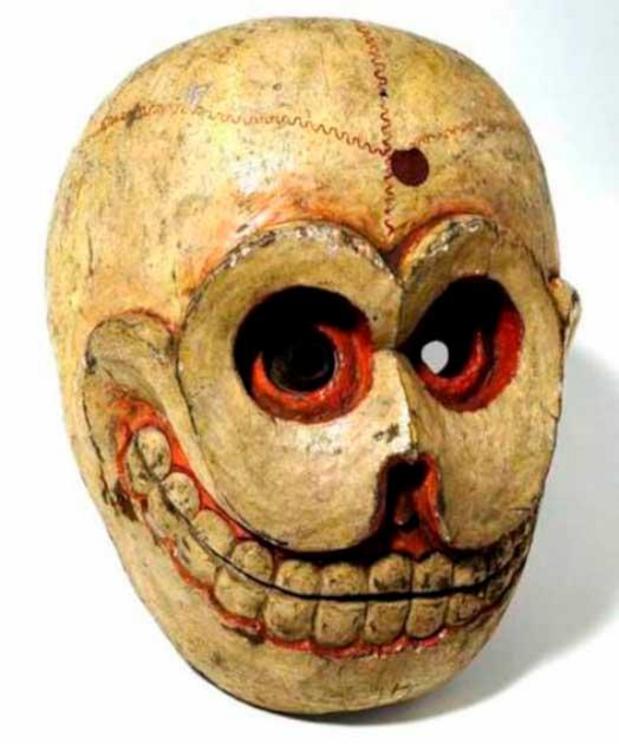 Skull funerary mask from Bhutan
Skull funerary mask from Bhutan
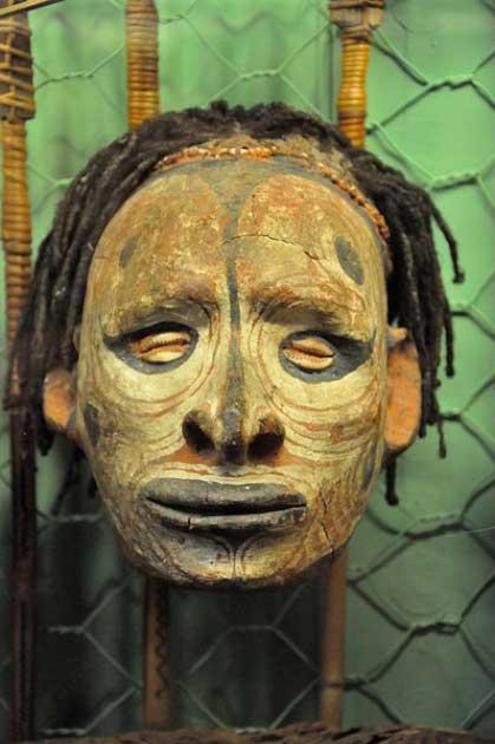 Decorated human skull, Sepik River, New Guinea.
Decorated human skull, Sepik River, New Guinea.
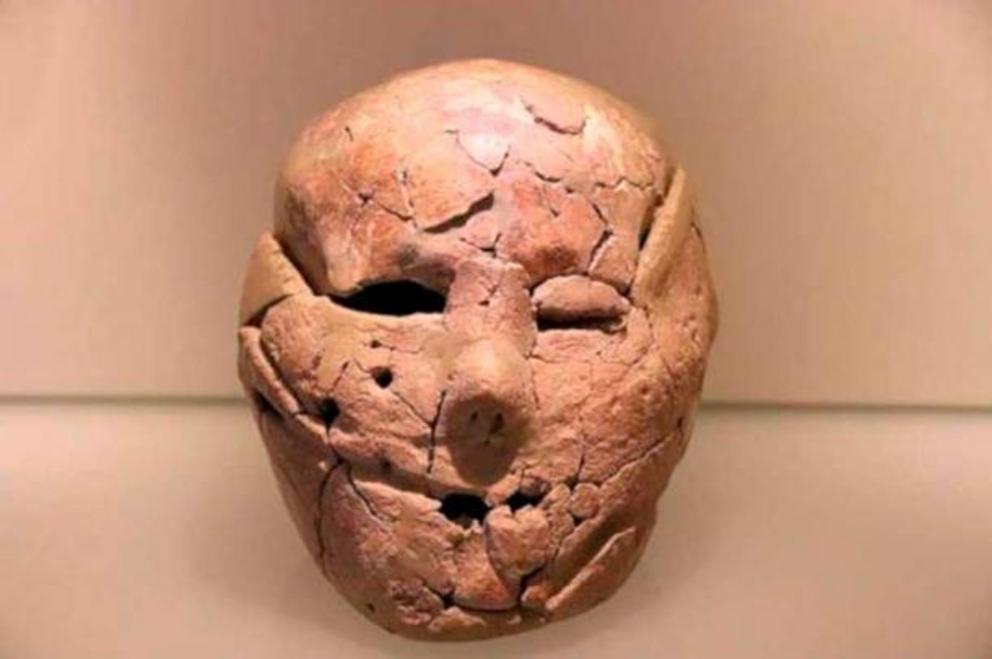 Plastered skull mask, c. 9000 BC, Israel Museum, Jerusalem. The plastered skulls of Jericho are the oldest funerary masks in the world. The skulls of their dead were removed and covered with plaster in order to create very life-like faces, complete with
Plastered skull mask, c. 9000 BC, Israel Museum, Jerusalem. The plastered skulls of Jericho are the oldest funerary masks in the world. The skulls of their dead were removed and covered with plaster in order to create very life-like faces, complete with
 Skull Mask made by the Tolai people using human skull, parinarium nut paste, human hair, and paint. New Guinea Islands.
Skull Mask made by the Tolai people using human skull, parinarium nut paste, human hair, and paint. New Guinea Islands.
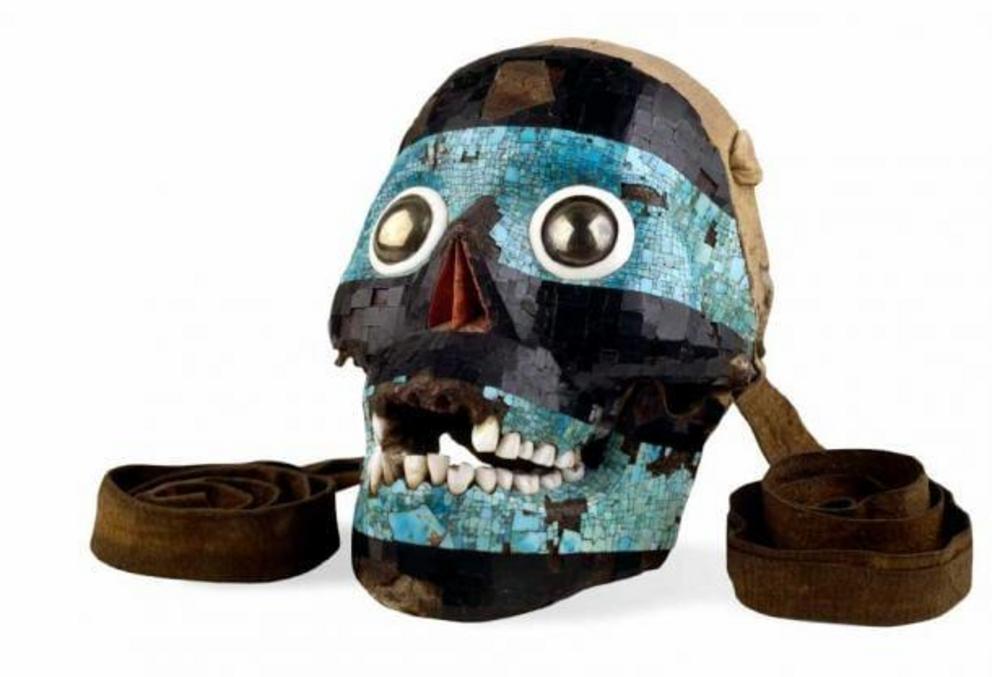 The mosaic skull mask of Tezcatlipoca is believed to represent Tezcatlipoca, a.k.a. “Smoking Mirror,” one of the four powerful and influential creator gods of Aztec mythology. This Aztec artifact is a human skull covered with a mosaic of turquoise. Expe
The mosaic skull mask of Tezcatlipoca is believed to represent Tezcatlipoca, a.k.a. “Smoking Mirror,” one of the four powerful and influential creator gods of Aztec mythology. This Aztec artifact is a human skull covered with a mosaic of turquoise. Expe
 Overmodelled Skulls from New Guinea. The Iatmul people would preserve skulls of both relatives and enemies--by overlaying them with clay and then painting them.
Overmodelled Skulls from New Guinea. The Iatmul people would preserve skulls of both relatives and enemies--by overlaying them with clay and then painting them.
 Aztec skull mask, National Museum of Anthropology, Mexico City.
Aztec skull mask, National Museum of Anthropology, Mexico City.
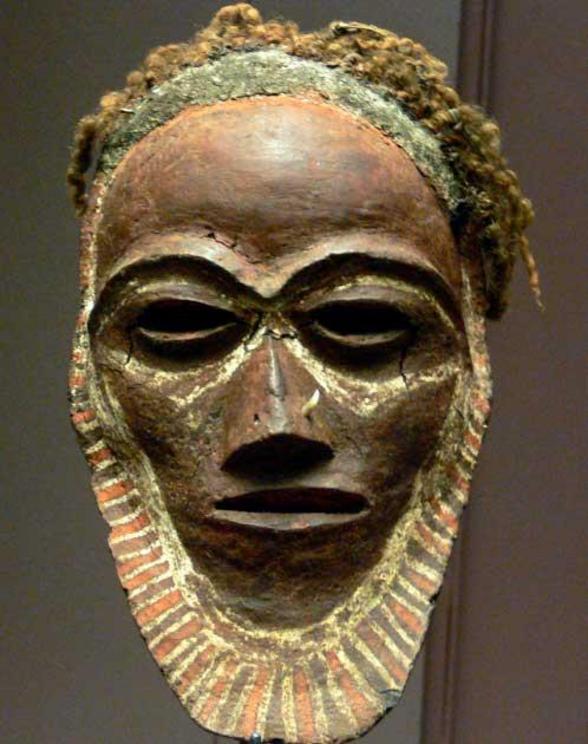 Skull mask made with skull bones, human hair, and clay. New Britain; South Seas Department, Ethnological Museum, Berlin, Germany.
Skull mask made with skull bones, human hair, and clay. New Britain; South Seas Department, Ethnological Museum, Berlin, Germany.
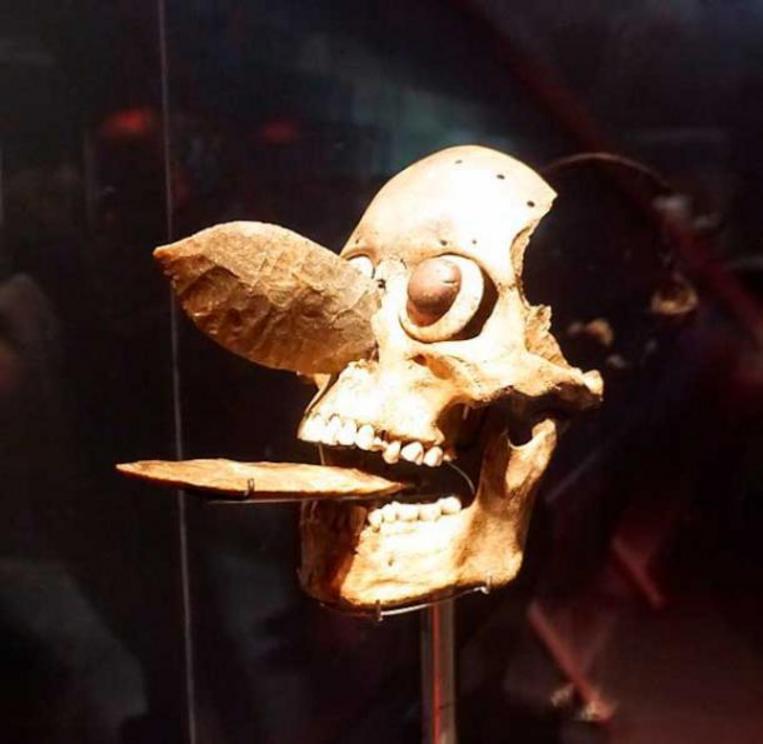 Skull mask from Templo Mayor in Tenochtitlan. It was made in the 15th century from the skull of a defeated elite warrior, two flint blades, sea shell, and pyrite. It was probably part of a ceremonial headdress or belt. Collection Museo del Templo Mayor, M
Skull mask from Templo Mayor in Tenochtitlan. It was made in the 15th century from the skull of a defeated elite warrior, two flint blades, sea shell, and pyrite. It was probably part of a ceremonial headdress or belt. Collection Museo del Templo Mayor, M
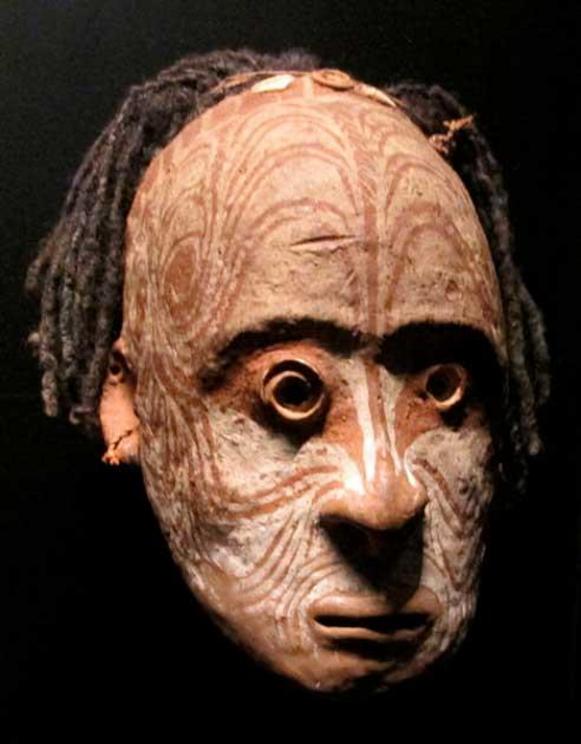 Overmodelled human skull from Papua New Guinea
Overmodelled human skull from Papua New Guinea
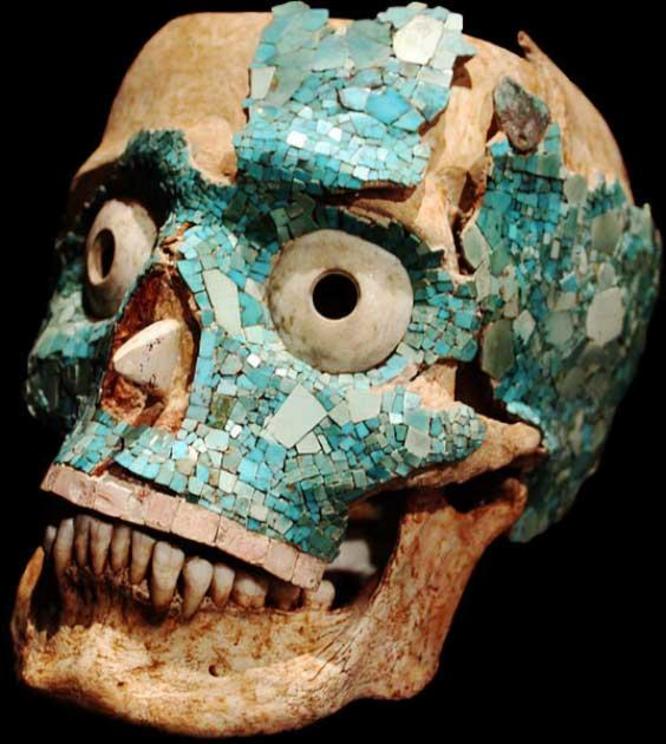 Mixtec funerary mask made with human skull and decorated with mosaics.
Mixtec funerary mask made with human skull and decorated with mosaics.
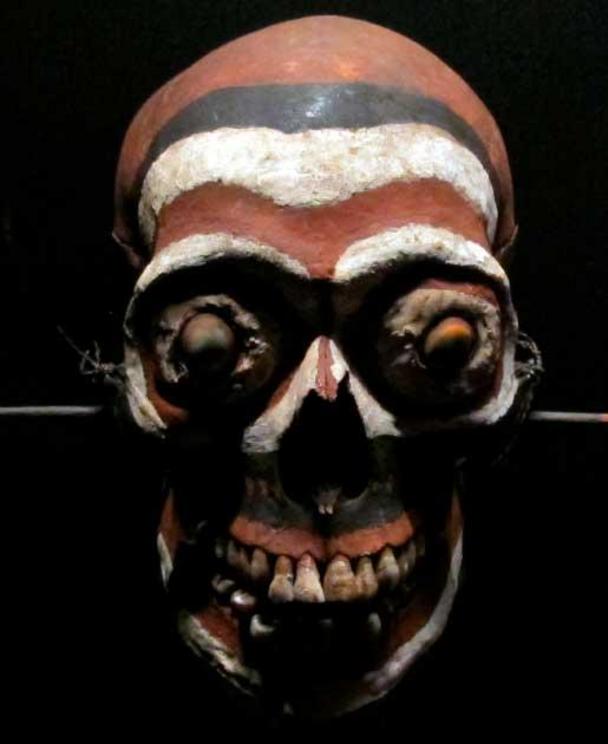 Papua New Guinea skull mask
Papua New Guinea skull mask
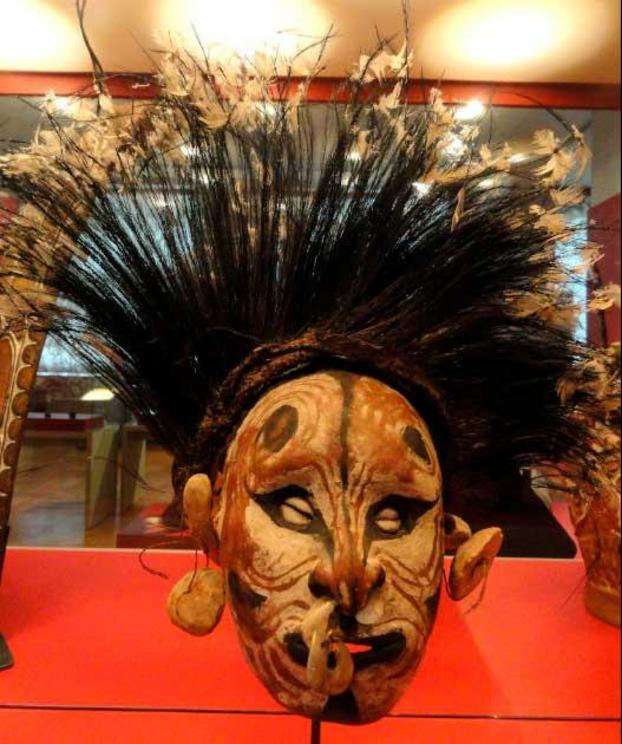 Mask made of overmodelled skull with cassowary feathers, Papua New Guinea.
Mask made of overmodelled skull with cassowary feathers, Papua New Guinea.
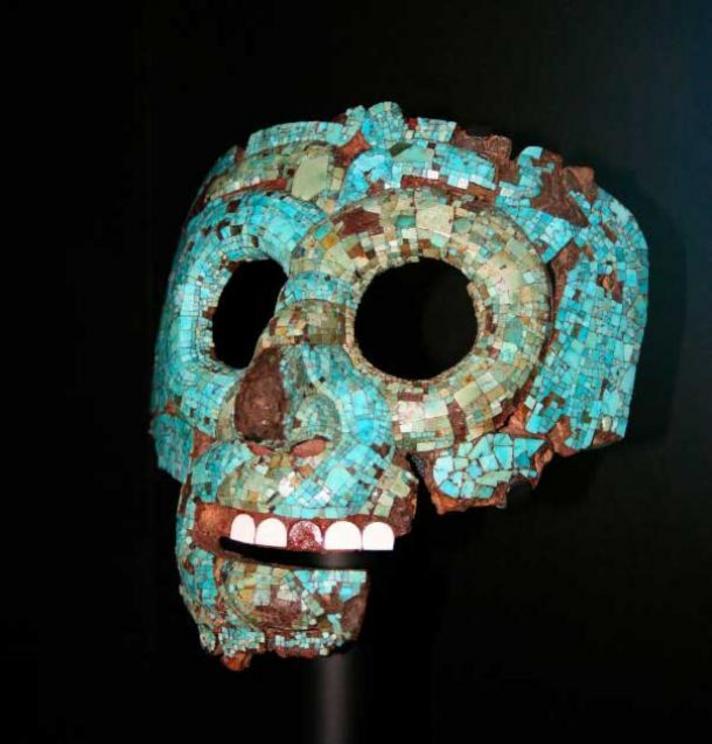 An Aztec or Mixtec skull mask of Quetzalcoatl, made of turquoise on top of human skull.
An Aztec or Mixtec skull mask of Quetzalcoatl, made of turquoise on top of human skull.

